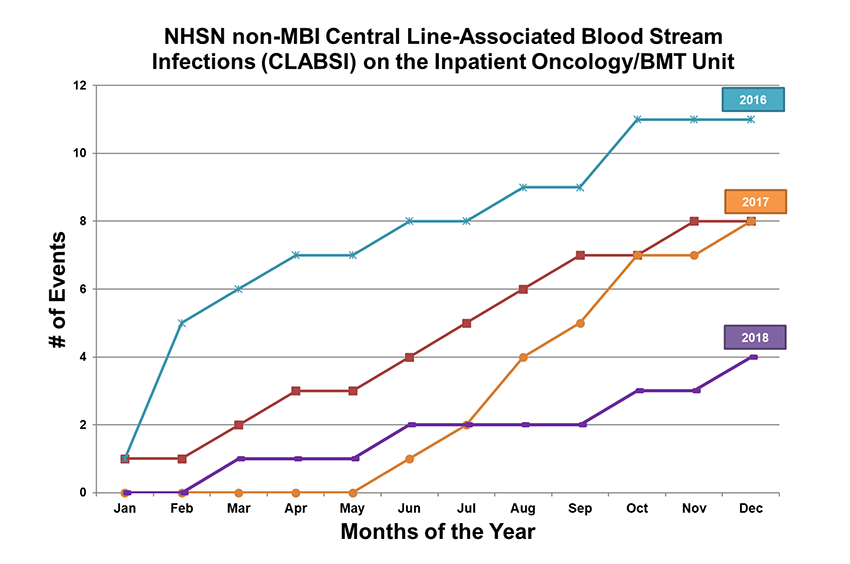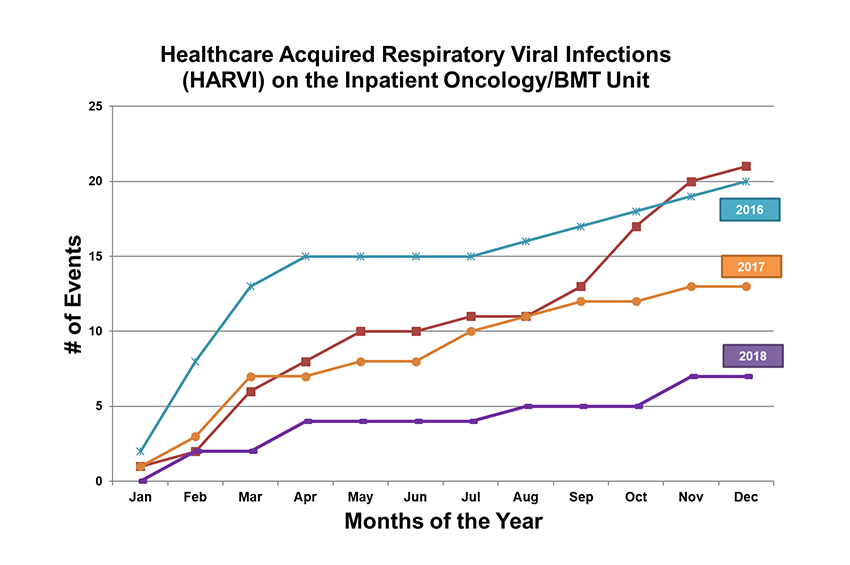Quality and Reporting
To ensure the Division of Hematology, Oncology, and Blood & Marrow Transplant is held at the highest standards, we are committed to providing transparent information regarding our quality, data, and outcomes to patient families and clinical and research peers. Our division voluntarily participates in national commissions that collect data from around the country, with the goal of developing quality improvement initiatives and measurements that will continue to enhance cancer care here at home and around the country.
Commission on Cancer's (CoC) Outstanding Achievement Award
 The cancer team at Nationwide Children's is proud to be one of only five hospitals in Ohio to receive the Commission on Cancer's (CoC) 2019 Outstanding Achievement Award. Recipients of this award have met all six commendation eligible standards set by the CoC and have achieved compliance with the remaining 28 standards that are required for accreditation.
The cancer team at Nationwide Children's is proud to be one of only five hospitals in Ohio to receive the Commission on Cancer's (CoC) 2019 Outstanding Achievement Award. Recipients of this award have met all six commendation eligible standards set by the CoC and have achieved compliance with the remaining 28 standards that are required for accreditation.
- The Cancer Genetics (CG) Clinic at Nationwide Children’s Hospital was launched in 2017
- The GC clinic evaluates patients with a suspected genetic predisposition which may put them at increased risk of developing cancer over their lifetime.
- The team consists of oncologists, genetic counselors, and psychologists
- 2018 patient data
- 52 new patients underwent evaluation
- 37 patients were recommended for genetic testing after complete review of the medical and family history
- 35 patients had genetic testing completed
- 16 patients tested positive for a cancer predisposition syndrome
- 15 patients are currently undergoing regular cancer surveillance in an effort to identify a new cancer early. This brings the total to 26 patients undergoing regular cancer screening.

What is a central line associated blood stream infection?
Many children being treated for cancer or undergoing a bone marrow transplant (BMT) will need a special catheter called a central line. A central line-associated blood stream infection (CLABSI) occurs when germs enter the blood stream through a central line catheter and cause a patient to become sick.
Why do we measure?
- CLABSIs cause a patient to become ill.
- Low rate of CLABSI can be a marker of the safety of a hospital.
- We aim to continue to reduce number of CLABSI using data we collect.
How are we improving?
- We continue to implement best practices and provide new prevention techniques.
- We promote hand hygiene
What does the graph show?
CLABSIs that are preventable are called non-MBI CLABSI. We can display our CLABSI outcome as a rate (infections per 1000 catheter days) or as we show in the graph below as individual events (each infection) on an annual basis. Our CLABSI rate is among the lowest in the country.

What is a healthcare-associated respiratory viral infection?
A healthcare-associated respiratory viral infection (HARVI) is a upper respiratory infection a patient acquires while admitted to the hospital for another reason.
Why do we measure?
- A HARVI can cause a patient with cancer to become ill or require a longer hospital stay.
- Low rate of HARVI can be a marker of the safety of a hospital.
- We aim to continue to reduce the rate of HARVI using data we collect.
How are we improving?
- We continue to implement best practices and provide new prevention techniques.
- We promote hand hygiene and the wearing of masks during periods when viruses are more common in the community.
What does the graph show?
Because every child matters, we are showing our HARVI data as individual events (each infection) on an annual basis.
